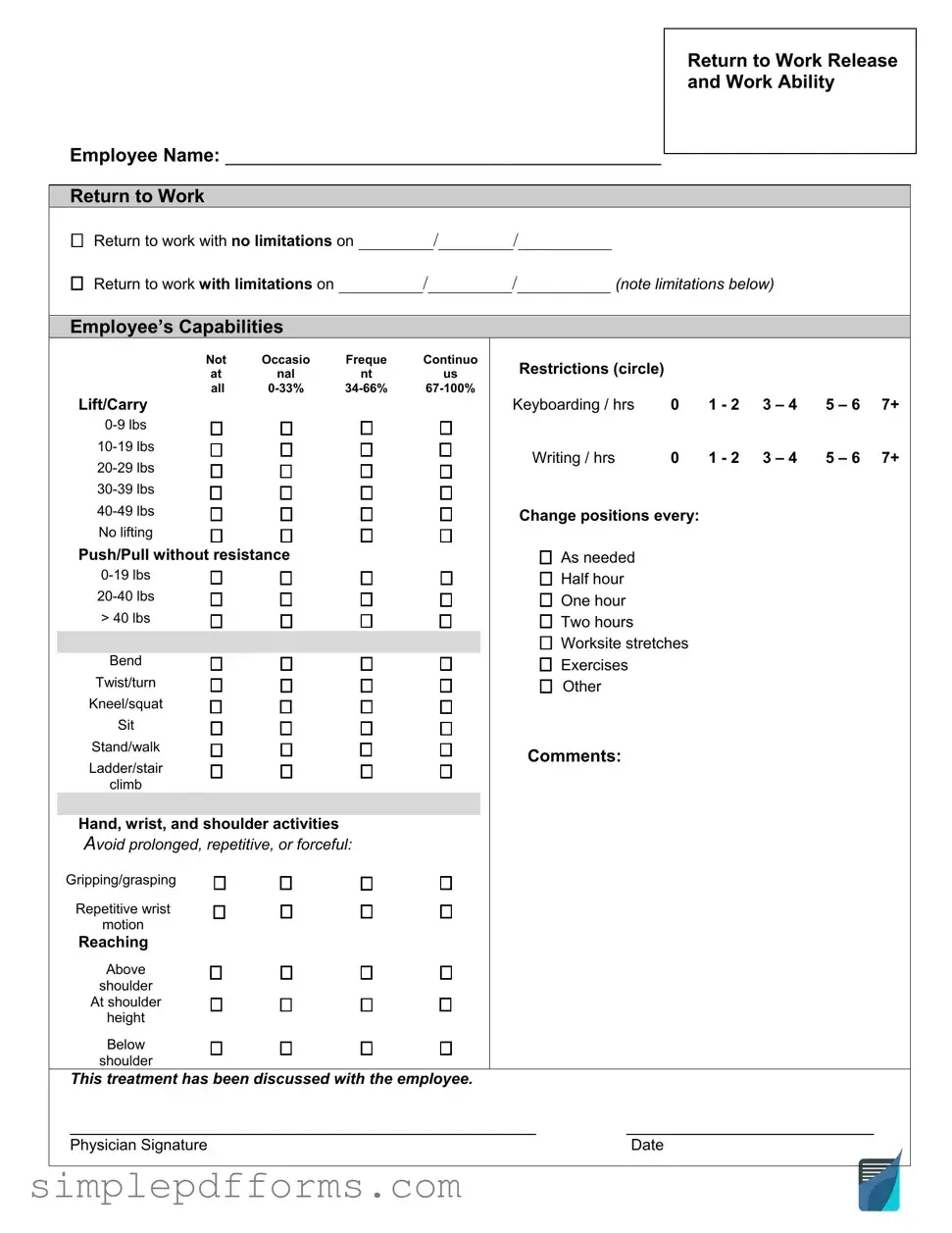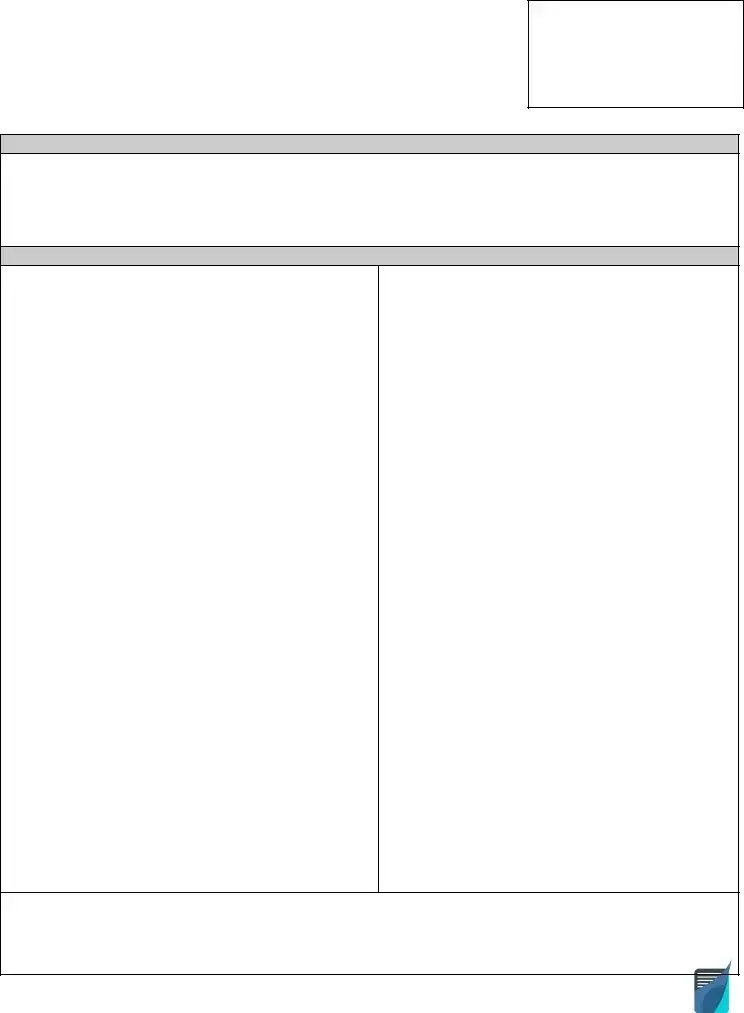Filling out the Work Release form can be straightforward, but many people stumble over common mistakes that can delay the process. One frequent error is not reading the instructions carefully. Each section of the form has specific requirements, and overlooking these can lead to incomplete submissions.
Another common mistake is providing incorrect personal information. Whether it’s a misspelled name or an incorrect address, inaccuracies can cause confusion and slow down the approval process. Always double-check the details before submitting.
Many individuals forget to sign the form. This might seem minor, but without a signature, the form is not valid. It’s a good practice to review the entire document to ensure all necessary signatures are in place.
Some people neglect to include all required documentation. The Work Release form often requires additional paperwork, such as proof of employment or medical records. Failing to attach these documents can result in delays or outright rejection.
Another mistake is not keeping a copy of the submitted form. Having a record can be crucial if any issues arise later. It’s wise to make a photocopy or take a digital snapshot before sending it off.
Additionally, individuals sometimes submit the form without checking for deadlines. Each organization may have different timelines for submission. Missing a deadline can mean starting the process all over again.
In some cases, people may not provide a clear reason for the work release request. A vague explanation can lead to confusion and may not adequately justify the request. Being specific helps reviewers understand the need for the release.
Misunderstanding the terms and conditions is another frequent issue. Some individuals may not fully grasp what is expected of them once the work release is granted. It’s essential to read and understand these terms to avoid future complications.
Lastly, some people fail to follow up after submitting the form. Checking in can provide peace of mind and ensure that the request is being processed. It’s always better to be proactive than to wait in uncertainty.
By avoiding these common pitfalls, individuals can navigate the Work Release form process more smoothly. Attention to detail and clear communication can make a significant difference in achieving a successful outcome.

